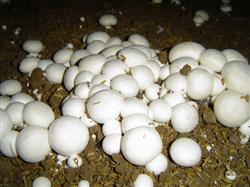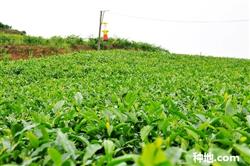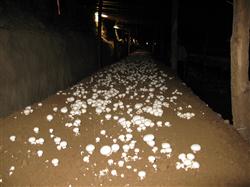How can Agaricus bisporus be planted with high yield?

How can Agaricus bisporus be planted with high yield? Please introduce in detail that Agaricus bisporus is the edible fungus with the largest cultivated area and yield in the world because of its fresh and tender meat, delicious taste and rich nutrition. The main cultivation techniques are as follows: 1 Raw materials and formula the main raw materials for the cultivation of Agaricus bisporus are the leftovers of all kinds of agricultural products (8.48ml, 0.18 and 2.08%) and high-quality livestock and poultry droppings such as horses, cattle and chickens, which are fermented in a reasonable proportion. The commonly used formula is: 2000 kg of ① hay, 2000 kg of dried horse dung, 150kg of rapeseed cake, 50kg of calcium superphosphate, 50kg of gypsum, 15kg of lime; 2000 kg of ② hay, 1400 kg of dried cow dung, 100kg of rapeseed cake, 40kg of calcium superphosphate, 40kg of gypsum and 15kg of lime. (2) the wheat straw was pre-wet, and the wheat straw was wet or soaked for 3 days before the pile, so that the wheat straw could keep enough moisture. When stacking materials, it is 1.50 meters wide and 2.50 meters wide and 1.50 meters high, and the length is determined according to the size of the site. When laying the material, the grass is about 30 centimeters thick, and the dung is about 3 centimeters thick, with a layer of grass and a layer of dung in the order of grass before dung, each with about 10 layers, and the top of the pile is in the shape of a turtle back. The rapeseed cake is layered in the middle of the pile when it is built. Spray water while building the heap, and the water should be sprayed on the grass. It is appropriate to have water seeping out of the heap after the completion of the heap. 3 pre-① fermentation of the culture material: turn the pile on the 5th day after construction, and evenly sprinkle half of the gypsum powder and calcium superphosphate during the pile turning process; on the 9th day, the dung and grass should be fully mixed and evenly sprinkled with the remaining gypsum powder and calcium superphosphate; on the 12th day, the pile was turned to add lime powder for the third time. When turning the pile, water should be added according to the dry humidity of the pile. ② post-fermentation: after the end of the pre-fermentation, move the material into the mushroom room while it is hot, and the culture material should be concentrated on the middle bedstead of the mushroom room. After the material stack itself is fermented for 6 hours, it will be heated by steam to pass the overheated steam into the mushroom room, so that the temperature of the mushroom room will rise to about 62 ℃. The temperature of the mushroom room will be ventilated and cooled after 8 hours, so that the material temperature will be about 50 ℃, and the temperature will be kept at 4 ℃ for 6 days. After the end of fermentation, it was ventilated and cooled slowly, so that the temperature of the material was below 28 ℃ to sow. The quality standard of the culture material after the end of post-fermentation is: wheat straw is brown, soft and elastic, tough and non-sticky, fragrant but without ammonia flavor, and the water content of the culture material is about 65%. (4) after sowing and sending bacteria, after the end of fermentation, arrange the materials in the mushroom room, spread the culture materials evenly on each bed frame, and the cultivation thickness is about 20 cm. When the temperature of the material drops below 28 ℃ and there is no smell of ammonia, sowing is carried out by mixed sowing, that is, 75% of the bacteria and the culture material are fully mixed, the remaining bacteria are evenly scattered on the material surface, and then covered with a layer of thin material, the material surface is gently pat with a board, so that the culture material is in full contact with the strain. The temperature of the mushroom room is controlled at 20 ℃, and the air relative humidity is kept at 70% Murray 80%. There is more ventilation in hot and humid weather and less ventilation in dry and cold weather. In the later stage, the surface of the culture material should be kept dry, reduce the contamination of miscellaneous bacteria and promote the rapid growth of hyphae into the culture medium. (5) the management of soil mulching and soil mulching about 15 days after sowing, most of the hyphae can be covered with seven when they reach the bottom of the culture material. If the material surface is dry, spray water to wet the material surface and cover the soil. Choose vegetable garden soil or clay loam. Before covering the soil, break the soil particles and sift them. The diameter of the soil particles is 0.50 Mel 2 cm. The soil was first sterilized with formaldehyde, and after formaldehyde volatilization, dichlorvos was sprayed for insecticidal treatment. The use of one-time cover, the thickness of the soil is 3.50 Murray 5cm, the soil should be uniform and the thickness is the same. After covering the soil, the water should be gently sprayed and sprayed frequently, spraying 3muri 4 times a day, adjusting the soil water content to 18% Murray 24%, that is, the soil particles can be pinched flat but not broken, moist, without a white heart. Strengthen water management, keep the soil layer moist, the room temperature is about 20 ℃, and the air relative humidity is 80% Murray 90%. 6 when the mycelia of mushroom management climb onto the surface of the overlying soil layer, the room temperature is controlled for 12 ℃, the air relative humidity is about 90%, ventilation and moisture management are carried out. Spray mushroom water, about 3 kg per square meter of water, divided into 6 Murray 10 times in 2 Murray 3 days to spray, promote the formation of mushroom primordium. When the primordium generally grows to the size of soybeans, spray mushroom water, about 2 kg per square meter of water, spray 3 times a day, spray in 2 days. The principle of spraying water in the soil layer after mushroom emergence is to spray frequently, spray more often, spray less when less mushroom, spray less in the early stage and spray more in the later stage. When spraying water, the nozzle of the water gun should be tilted upward to make the water fall in a fog to prevent the water from being sprayed directly on the mushroom body. Stop spraying water before harvesting mushrooms. When the mushroom cap grows to 2murmur5cm and the fruiting body membrane is not broken, it is harvested. When harvesting, gently pinch the cover with your thumb, index finger and middle finger, rotate and pull it out; if the mushrooms are clustered, cut off the mushrooms with a sharp knife and leave the mushrooms. It should be picked and laid down gently when harvesting. After harvest, the mushroom roots, dead mushrooms and mushroom fragments should be removed in time, and the soil should be filled to make the mushroom bed smooth and clean. Click to get more mushroom planting techniques click to get more edible mushroom cultivation techniques
- Prev

How to cultivate pollution-free tea?
How to cultivate pollution-free tea? Please guide the growing demand for diversification, harmlessness and health care of tea. Pollution-free cultivation of tea can effectively control pesticide residues in tea, which can not only ensure the health of tea exports and consumers, but also improve the economic benefits of producers. Now there will be pollution-free tea.
- Next

How to grow Agaricus bisporus?
How to grow Agaricus bisporus? Please introduce Agaricus bisporus, also known as Agaricus bisporus, Agaricus bisporus, which is the first large edible mushroom in the world. The nutritional value of mushroom is very high. At present, it is developing very fast, growing at a rate of 15% to 20% a year. Agaricus bisporus is a straw rot fungus, medium-and low-temperature mushrooms, rice straw and wheat in the north.
Related
- Fuxing push coffee new agricultural production and marketing class: lack of small-scale processing plants
- Jujube rice field leisure farm deep ploughing Yilan for five years to create a space for organic food and play
- Nongyu Farm-A trial of organic papaya for brave women with advanced technology
- Four points for attention in the prevention and control of diseases and insect pests of edible fungi
- How to add nutrient solution to Edible Fungi
- Is there any good way to control edible fungus mites?
- Open Inoculation Technology of Edible Fungi
- Is there any clever way to use fertilizer for edible fungus in winter?
- What agents are used to kill the pathogens of edible fungi in the mushroom shed?
- Rapid drying of Edible Fungi

